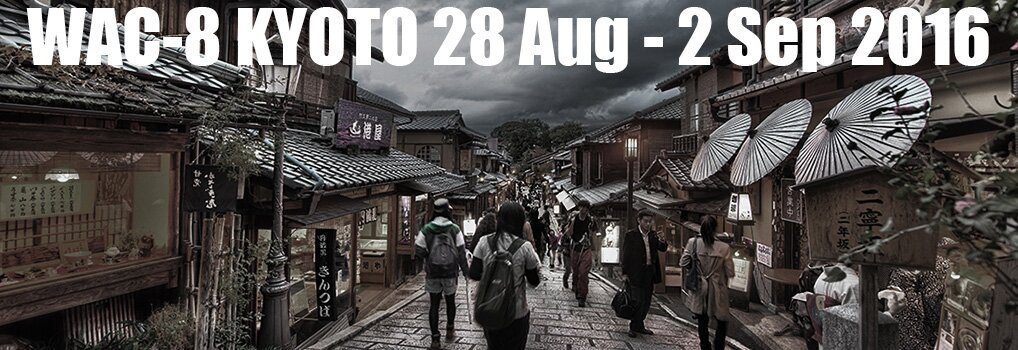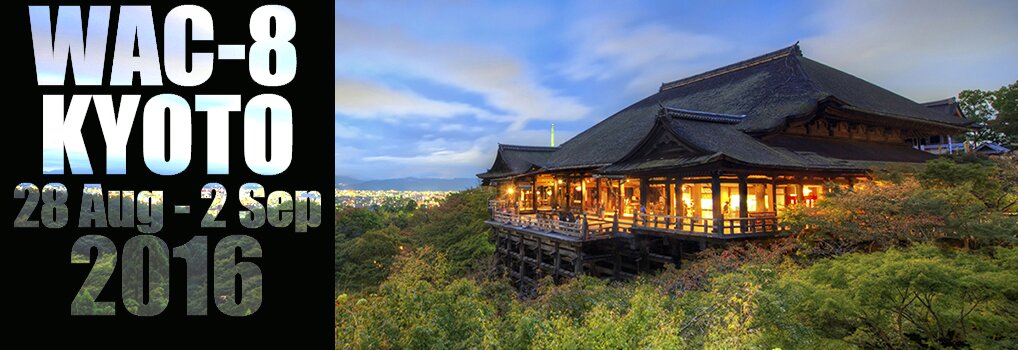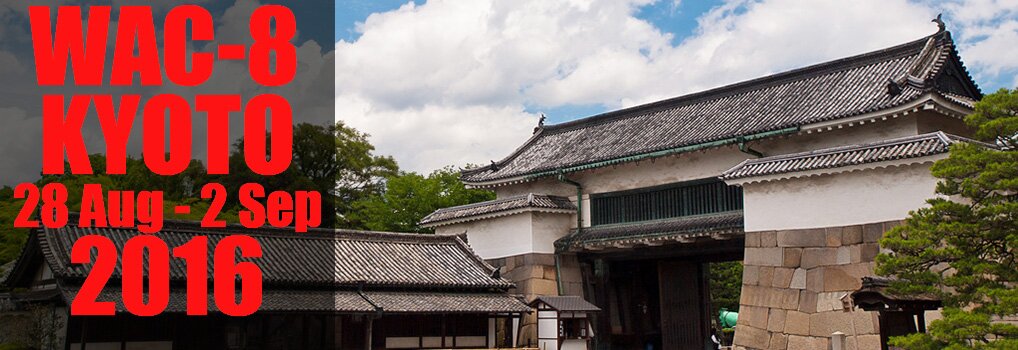| T01 | T02 | T03 | T04 | T05 | T06 | T07 | T08 | T09 | T10 | T11 | T12 | T13 | T14 | T15 |
| Theme list | Session organizers index | Accepted sessions list |
| T14. Art and Archaeology Lila Janik, Peter J Matthews, Sahoko Aki and Kenichi Yano |
|---|
| Artistic expression is one of the unique attributes of Homo sapiens that can be traced over a hundred thousand years. How did the creative ability to produce music, visual art or body performance develop in prehistoric and historic cultures? To interpret material culture in terms of artistic object production, use, display and appreciation, contemporary archaeologists employ modern scientific methods, diverse theoretical standpoints, and collaborative exploration with practicing artists. Intangible performances ‘captured’ in ancient rock art give us insights into long forgotten dance practices or seasonal celebrations. Preserved instruments, past depictions, and scientific analyses of sound provide an aural dimension to otherwise silent archaeological enquiry. Synergies between the creative, scientific and interpretive can cut across or focus on the visual, musical, performance and other arts. These are all topics we invite for consideration by session organisers. Alongside the archaeology-focused presentations, we invite practicing artists to join the academic sessions or contribute through exhibition or performance. We hope these collaborations will bring new dimensions to the academic sessions, with participating artists using archaeological methods to explore the world, or deriving inspiration from working with archaeologists and scientific views on the past. Sessions may also focus on artists and archaeologists working together to transform the broken pieces of history into public perceptions of the past and archaeological enquiry. One challenge of the theme is to involve archaeologists and artists in equal measure, in order to freely discover relationships between art and archaeology, and to create opportunities for unexpected synergies. Artistic and academic presentations will be made in local, small-scale settings within the old urban quarters of Kyoto. The exhibitions, performances, and academic presentations will be hosted in temple environments and mid-town landscapes, outside the main conference venue. Participants in these sessions will enjoy a rich experience of Kyoto, while also exploring the interactions between Art and Archaeology. |
Change and Continuity in Rock Art
Organiser(s): Paul S.C. Taçon (Griffith University / Australia) Inés Domingo (University of Barcelona / Spain) and Sally K. May (Australian National University / Australia)
Type: Symposium
Contact: p.tacon(at)griffith.edu.au
Abstract:
This session focuses on cultural transitions and interpretations of the motivations behind change and continuity in rock art globally. We are interested in archaeological evidence for human responses to major environmental change and/or important social changes. In some cases the two may be intertwined. Papers may address issues such as the disappearance and emergence of new artefact technologies depicted in rock art or used in its production, shifts in rock art styles, the impact of culture contact on rock art traditions, the effect of climate change on rock art, or other related areas. Case studies from across the world will highlight the dynamic nature of rock art traditions, especially in terms of symbolic communication during times of environmental, cultural and socio-political change. A particularly interesting topic of discussion will be the ways in which rock art has been used by some peoples to mediate change to other aspects of their lives.
Keywords: rock art, transitions, contact
Landscapes of art and the art of landscapes
Organiser(s): Liliana Janik (University of Cambridge / UK) and Ekaterina Devlet (Russian Academy of Sciences / Russian Federation)
Type: Symposium
Contact: lj102(at)cam.ac.uk
Abstract:
One of the most interesting and revealing aspects of visual communication is the way art conveys the themes of landscape, environment and the natural world of which the artist is a part, and how this relates to how art is located in settings of the natural world, including natural landscapes and environments. This session will focus on three trends in world prehistoric and ancient art relating to themes:
1) How landscape, environment, natural or cultural locations, physical places, morphological features and/or cultural destinations, are used as part of, or as the subject of visual narratives e.g. the volcano at Çatalhöyük house or rivers in the rock art of the White Sea.
2) The representation of environmental proxies in ancient imagery e.g. dragonflies on Yayoi bells and moose in North American rock art. Can such depictions help us understand and interpret past landscapes, climate and environment in prehistoric and ancient communities, and provide some clues in looking at contemporary art.
3) Landscape as a place of artistic location: what kind of environmental, physical and morphological features were used in ‘setting’ art e.g. in placing rock art, how was the environment modified to accommodate sculptures, ritual and sacred places.
Keywords: world art, landsapes
Cancelled
Cognition, neuroaesthetics and creativity in the visual arts
Organiser(s): Liliana Janik (University of Cambridge / UK) and Naoko Matsumoto (Okayama University / Japan)
Type: Symposium
Contact: lj102(at)cam.ac.uk
Abstract:
Recent developments in brain research have greatly enhanced our understanding of the human capacity to make art, and the expression of identity through cultural and social metaphors, including visual representations. This session will explore the creative process through the production of images as neurophysiological contracts moderated by the social and cultural worlds of which artists were part, from the earliest evidence of art production to historical times. Presentations are invited which discuss the social, cultural and cognitive roles of visual art in different societies. The interpretations of sculptures, paintings, engravings and carvings will be presented in the context of both artist and audience, and their roles in producing and seeing world art in various social and cultural contexts in both the past and the contemporary world.
Keywords: cognition, neuroaesthetics, visual arts
Bringing The Past Back To Life: exploring material culture depictions in rock art assemblages from across the globe
Organiser(s): Sally K. May (Australian National University / Australia), Joakim Goldhahn (Linnæus University / Sweden) and Meg Travers (University of New England / Australia)
Type: Symposium
Contact: mtraver2(at)une.edu.au
Abstract:
This session explores depictions of material culture in rock art assemblages from across the globe and, furthermore, questions the role of ethnographic museum collections in their analysis and interpretation of material culture items. Though far from present in all rock art assemblages, depictions of material culture do occur in many of the regions famed for their rock art traditions including, but not limited to, South Africa, Australia, Norway, Sweden, Mexico, Spain and France. While the subject matter and age of these rich assemblages varies dramatically all provide a unique glimpse into the production, function and context of material culture of the past. Depictions of organic material culture items, such as fibre and wooden artefacts, are of particular interest given they are less commonly preserved in other archaeological contexts.
For this session we invite papers that present new information on material culture in rock art including studies that have tried to link ethnographic collections of objects with rock art. Papers are welcome to address individual images or whole rock art assemblages or to take a broader interpretative or theoretical approach to the subject.
Keywords: Material culture, rock art, museum collections
Interpreting prehistoric art: context, meaning, and function
Organiser(s): Chris Gosden (University of Oxford / UK), Alistair Paterson (University of Western Australia / Australia), Courtney Nimura (University of Oxford / UK) and Peter Hommel (University of Oxford / UK)
Type: Symposium
Contact: chris.gosden(at)arch.ox.ac.uk
Abstract:
Prehistoric art has always fascinated collectors, researchers, and the public alike. Explored in a variety of disciplines from art history to anthropology, interpretative and methodological approaches to the study of material classified as prehistoric art has varied dramatically over the last century. This variation has been shaped not only by specific disciplinary interests, but also by wider academic traditions and regional politics. Interpretations draw on a diverse corpus of literature and encompass theories of animism, magic, witchcraft, agency, religion, astronomy, and cosmology, to name but a few.
This session aims to bring together papers focusing on art from later prehistory. It will include both portable and parietal art created on or in a variety of materials. This session will specifically focus on the importance of archaeological context and examine how these can better inform our understandings of the significance of prehistoric art and its functions in society. It will ask what prehistoric art is, what it means, what it does and how it is enfolded into complex social relationships in both the past and present. A key objective of the session will be to showcase and share different interpretive methodologies across regional/disciplinary boundaries.
Keywords: Prehistoric art
Accessing the Social Lives and Meaning of Oceanic and Australian Art: Pre-contact, Contact period, and Historic Applications
Organiser(s): Jennifer Kahn (College of William and Mary / USA) and Scarlett Chiu (Academia Sinica / Taiwan),
Type: Symposium
Contact: jgkahn01(at)wm.edu
Abstract:
How does Oceanic and Australian Art symbolize social connections in the present and the past and how can our analyses get at the meaning behind the media? We define art broadly as including landscape art (monuments, tree carvings, rock art), traditional media (barkcloth motifs, ceramic designs, carvings, god figures, personal adornment), and body art (tattooing). In this session we bring together archaeologists, anthropologists, and material culturalists to share studies linking Oceanic and Australian art with social meaning. Presenters are asked to explore the varied social meanings behind Oceania and Australian art (identity and personhood, kinship relations, status and rank) and their relationship to varied socio-political structures (chiefly power, ideology, warfare, ethnicity, local versus regional identities). We welcome case studies focusing on both theoretical and methodological applications to the study of Oceanic and Australian art which investigate object life histories and meaning within cultural contexts.
Keywords: Art, Social connections, Oceania/Australia
Breaking the Frame: Art and Archaeology in Practice
Organiser(s): Carolyn White (University of Nevada Reno / USA) and Ursula Frederick (University of Sydney/Australia)
Type: Symposium
Contact: clwhite(at)unr.edu
Abstract:
The disciplines of archaeology and art have been drawing upon one another, consciously and unconsciously, overtly and covertly, for many decades. More recently, the relationship between the two fields has become more self-conscious, as artists draw on archaeological tropes and archaeologists recognize the aesthetic, visual, and performative aspects of their own discipline. Today, the lines between art and archaeology are blurring through active collaboration and interactions between practitioners in both fields. The resulting practices confront long-held ideas about what makes archaeological practice and what are the results of archaeological work. This session will engage with archaeologists, artists, and other practitioners and collaborators who blur the boundaries between art and archaeology. We encourage contributions that are innovative, experimental, practical, performative, exploratory, and/or experiential.
Keywords: art, practice, collaboration
Cancelled
Theory and Method in Scientific Studies of Asian Rock Art
Organiser(s): Saleem Shaik (Indian Institute of Science Education and Research, Mohali / India) and Parth Chauhan (Indian Institute of Science Education and Research, Mohali / Inadia)
Type: Symposium
Contact: saleemshaikhdc(at)yahoo.co.in
Abstract:
After prolonged study, rock art across Asia has become a significant branch of prehistory. Various theories have been proposed about the origin, purpose, function and antiquity of rock art. Diverse methodological and theoretical approaches are needed in order to understand the emergence of art in general and rock art in particular. The proposed session will address the origin, purpose, functions, antiquity, ethnography, and conservation of rock art. We will report technological advances in the identification, recording and analysis rock art, and invite regional comparisons of rock art in Asia.
Keywords: Asia, rock art, interpretative frameworks
Animals – Art – Archaeology
Organiser(s): Thomas W. Wyrwoll (Center for Archaeoiconological Mammalogy and Rock Art Studies / Germany) and Terence Meaden (Oxford University / UK)
Type: Symposium
Contact: tww(at)mail.de
Abstract:
Animals form the key subject of artistic depictions since the most ancient times. This is but a natural effect of their importance to humans, who are in biological terms indeed animals themselves. Depictions of animals might reflect zoological observations, human self-views, sources of nutrition by means of hunting or herding, or the incorporations of various of these issues in perceptions of the world.
The symposium is open to all kinds of reflections on prehistoric and protohistoric animal depictions by archaeologists or researchers in other branches of humanities as well as by artists and zoologists; contributions on all types of animal taxa in the art of any culture from every region of the world are welcome.
Keywords: Animals, Arts, Anthropozoology
Art-Archaeology: Art as Inspiration for Archaeologists
Organiser(s): Dragos Gheorghiu (National University of Art / Romania) and Jose-Roberto Pellini (Universidade Federal de Sergipe / Brazil)
Type: Symposium
Contact: gheorghiu_dragos(at)yahoo.com
Abstract:
Since the late 20th century, archaeologists have been seeking ways to look for archaeological interpretation of the past that goes beyond the scientifically based approaches. New models were developed with the help of analogical thinking, aiming to stimulate the academic imagination and new ways of seeing the past. One such model looked to art for inspiration.
In this session, we invite archaeologists, anthropologists and artists to present their personal experiences in using artistic concepts to explore the past, and ideas regarding the future connections between art and archaeological research. In particular, we will consider the roles of evocation and sensoriality in perceiving and interpreting the past.
Keywords: art-chaeology, imagination, sensory
Cultural Assimilation and Hybridity in Ancient and Medieval Art
Organiser(s): Durga Basu (Calcutta University / India), Alok Tripathi (Assam University / India) and Sergiu Musteata (State University / Republic of Moldova)
Type: Symposium
Contact: durgabasu57(at)gmail.com
Abstract:
Cultural assimilation and hybridity in art forms was a common phenomenon in many ancient civilizations. In ancient time trade or missionary contact occasionally resulted in assimilation of different cultures which in turn evolved into a new artistic trend with heterogeneous stylistic elements bearing the traits of two or more cultures. This can be termed as Hybridity. Hybridity or more precisely the combination of a number of cultural expressions manifested as a unique synthesis led to the development of a remarkable art form. The process of cultural interaction, assimilation and transformation into hybridity was diverse in different socio-political and geographical contexts. It is believed that hybridity or cross cultural assimilation has been able to improvise the domain of art with expressions of transcendence, immanence, religious ecstasy and mundane delight and even perception in idiom.
The contributions will report studies of the various artistic persuasions in the form of sculptures, paintings or any other art idioms during ancient and medieval periods which clearly show cross cultural assimilation and hybridity and provide understanding of the socio-cultural interactions of different countries in the light of cultural assimilation and hybridity.
Keywords: Art, cultural assimilation, hybridity
Also consult session T08-H for an additional art-related session.




